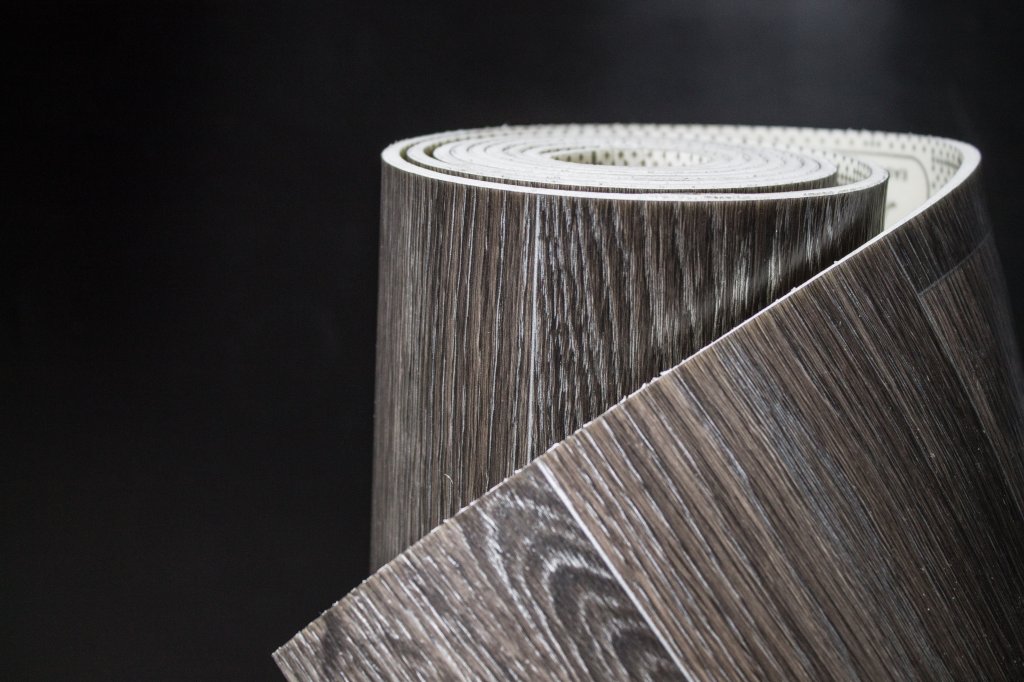The big advantage of the small remains
When the life of a person making repairs comes the happy moment of completion of all construction and finishing works, he is faced with a task that requires a pragmatic, but at the same time creative solution: “Where should the remnants of building materials be?”
This cheat sheet helps you find the right idea for you to use leftover PVC linoleum.
Easy and practical for your home and garden
· lay on the loggia, balcony, in the bathroom or toilet
· door mat
· stand for pots with indoor flowers
· clean path without weeds and dirt between the beds
· practical and original protection for outdoor wooden benches and tables
· insulation of street outbuildings
· flat and clean surface for inflatable pools
Simple and compact for your car
· floor mats
· trunk mat
· carpet for repair work under the car
Fun and educational for your children
· homemade sledges
· woven baskets, vases of thin and long strips
· protective napkin on the table for practicing creativity (modeling, drawing ...)
Experiment, invent and relax with B.I.G. linoleum!

There are two main types of rolled PVC coverings on the market for public and industrial premises (classes 34/43): homogeneous and heterogeneous linoleum. These materials are fundamentally different in structure, but similar in properties.
The main technical characteristics of both types of coatings are comparable:
-
overall thickness is about 2mm;
-
fire hazard class KM2 (RF) for most coatings;
-
absolute residual deformation and linear size variation are almost identical.

There are, however, a number of fundamental differences that must be considered before the final choice of a particular type of PVC linoleum:
- Base requirement. Despite the similar requirements for the base when laying different floor coverings, homogeneous linoleum is much more sensitive to the defects of the base than heterogeneous. Any grain of sand or depression will immediately appear on the surface of homogeneous linoleum and lead to damage to the coating (up to holes).
- Cost of installation, waste. Homogeneous linoleum is available on the market only in a width of 2 meters, while heterogeneous linoleum has a fairly wide range of widths from 1.5 to 4 meters – this reduces the time and cost of repairs, significantly reduces waste during installation.
- Cost of operation and maintenance. Daily care of homogeneous linoleum is not fundamentally different from the care of heterogeneous coating. However, in addition to daily maintenance, homogeneous linoleum needs periodic sanding, which together with operational loads erases the top layer of linoleum. For most affordable homogeneous coatings, this top layer must be restored with special mastics after each sanding. The cost of restoring homogeneous linoleum over three years is comparable and often exceeds the cost of completely replacing heterogeneous linoleum in 3 years.
THE EVOLUTION OF VINYL.
LINOLEUM IS THE FIRST ELASTIC FLOOR COVERING IN HISTORY.
IT IS KNOWN THAT IT WAS BY OILING THE FABRIC THAT THE VIKINGS GAVE THE SAILS OF THEIR DRAKARS ADDITIONAL STRENGTH AND PROTECTION FROM WATER AND SALT.The inventor of linoleum is considered to be the Englishman FREDERICK WALTON, who in 1863 received a patent for an improved technology for the production of oxidized linseed oil and floor coverings based on it. He also belongs to the authorship of the name "linoleum". The meaning of the name is transparent - the main raw material in the production of natural linoleum is linseed oil - from the Latin "linum oleum".
The development of chemistry and industrial production of plastics in the 50s of the XX century led to the emergence of a new type of flooring material - PVC coating (vinyl). With the replacement of linseed oil with PVC, the coating became much more reliable and safer. The color palette and design options have increased significantly - today you can buy vinyl that accurately imitates wood, tiles, metal, cork or carpet, as well as with an abstract or modern design.
The production of vinyl flooring is a complex high-tech process. Modern linoleum is a high-quality finishing material that has nothing in common with the flooring that everyone has known about since Soviet times.
However, technology does not stand still. In 2020, B.I.G opened a line for the production of laminated vinyl in Russia.
The top layer of such a floor covering is formed by a protective film, on which a high-precision pattern is applied. The technology of combining protective and decorative layers is called HD VINYL.
The incredibly light, durable, virtually pore-free protective layer HD VINYL, manufactured using the calendering method, provides protection against abrasion and also makes the coating easier to care for. Thanks to its dense structure, it acts as a barrier, preventing aggressive dyes from berries, brilliant green, fuel oil, red wine or ketchup from getting in. And also eliminates moisture penetration under the vinyl during operation, respectively, prevents the development of mold and the proliferation of bacteria.
Using modern technologies, laminated vinyl designs are made with HD resolution, which ensures high clarity and detail of the pattern, a realistic image of any natural structure and the ability to discern the smallest nuances.
A laminated base is used as the bottom layer in laminated vinyl. This is a double layer of foamed PVC and heat and sound insulating non-woven fabric (polyester). This is a durable, warm, environmentally friendly and completely non-rotting base, which gives the coating a unique softness, and at the same time, elasticity. It is extremely difficult to tear vinyl on a duplicated base with bare hands. It perfectly resists temperature changes, which makes it possible to use laminated vinyl for finishing country houses and cottages, and also makes transportation of such a covering in the conditions of the far north completely safe.
LAMINATED VINYL is a modern and high-tech floor covering. Due to the presence of only two layers and special processing, such vinyl is light, durable, wear-resistant, elastic, and, at the same time, very warm and quiet.
THE LATEST TECHNOLOGIES AND PERFECT PERFORMANCE CHARACTERISTICS OF COATINGS
- REALISTIC IMAGE OF ANY STRUCTURE
- RANGE OF WIDTHS FROM 1.5 TO 4 M*
- HIGH TEAR RESISTANCE
- MODERN TRENDS IN DESIGN
- CURRENT CERTIFICATION IN THE RUSSIAN FEDERATION AND THE CIS COUNTRIES
PRODUCTION AND INNOVATIONS
JUTEKS Factory has been producing the TEXTURA brand since 2020 on the latest vinyl lamination line.
- THERMAL LAMINATION TECHNOLOGY provides the coating with a special density
- INNOVATIVE APPROACH TO PRODUCTION allows us to launch 2 new collections every year
- LINE CAPACITY provides productivity up to 20 million m² per year
STRUCTURE OF VINYL FLOORING TEXTURA
An ultra-strong decorative layer with HD resolution. Guarantees protection against abrasion and makes maintenance incredibly easy.
AN INCREDIBLY LIGHT, DURABLE, VIRTUALLY NON-PORE PROTECTIVE LAYER MADE BY A CALANDERING METHOD.
Thanks to its dense structure, it acts as a barrier, preventing aggressive dyes from berries, brilliant green, fuel oil, red wine or ketchup from getting through. And also eliminates moisture penetration under the vinyl during operation, accordingly, prevents the development of mold and the proliferation of bacteria.
ADVANTAGES:
• LIGHTER, DURABLE COATING WITH ALL OTHER EQUAL PERFORMANCE INDICATORS
• COLOR STABILITY
• CLEARER IMAGE IN HIGH RESOLUTION
• COATING DOES NOT REACT TO ULTRAVIOLET
2. DOUBLE / EXTRA-D BASE
The duplicated base made of foam and polyester is responsible for heat, sound, noise insulation and resistance to temperature changes, is incredibly resistant to moisture and is not subject to decay. A special foam bonding layer creates a strong bond between HD VINYL and polyester.
INNOVATIVE DUPLICATED BASE WITH HIGH DENSITY PES
ADVANTAGES:
• PERFORMANCE CHARACTERISTICS UP TO 70% HIGHER THAN DUPLICATED BASE OF THE SAME THICKNESS
• MAINTAINS DIMENSIONAL STABILITY
3. BACK PRINT
with a cutting grid* and special pictograms helps with installation and reminds you of the basic rules for caring for vinyl.
(*the cutting grid is not a measuring tool, but is intended to simplify cutting and obtain an even cut of material. Use a ruler or tape measure to measure)